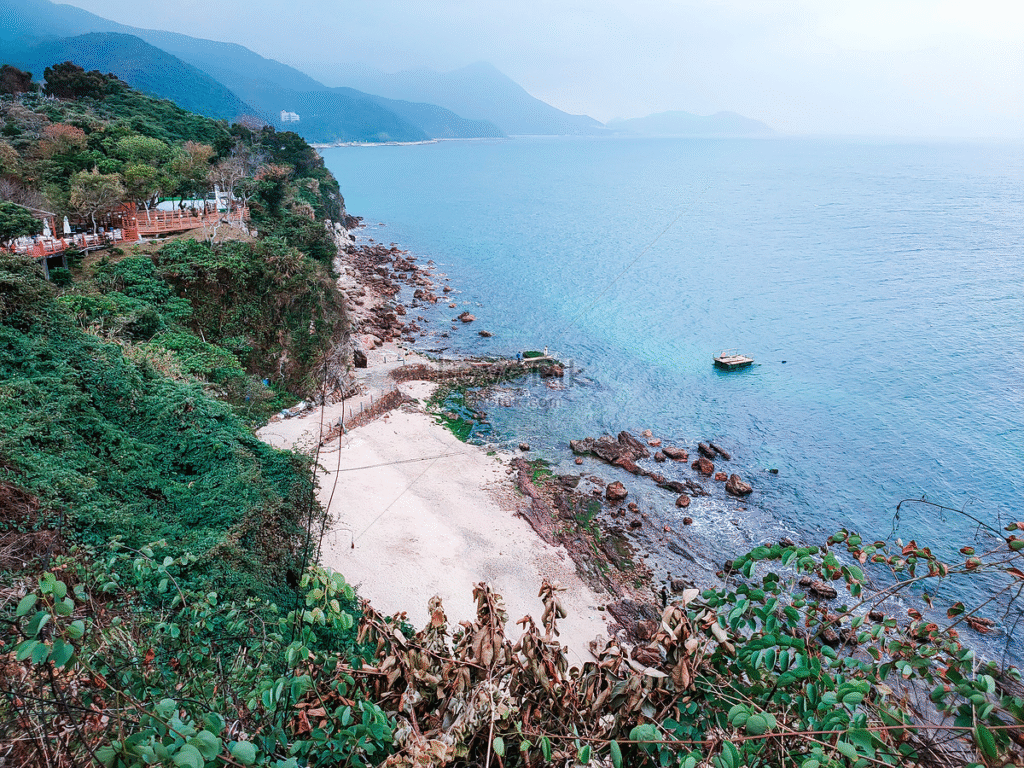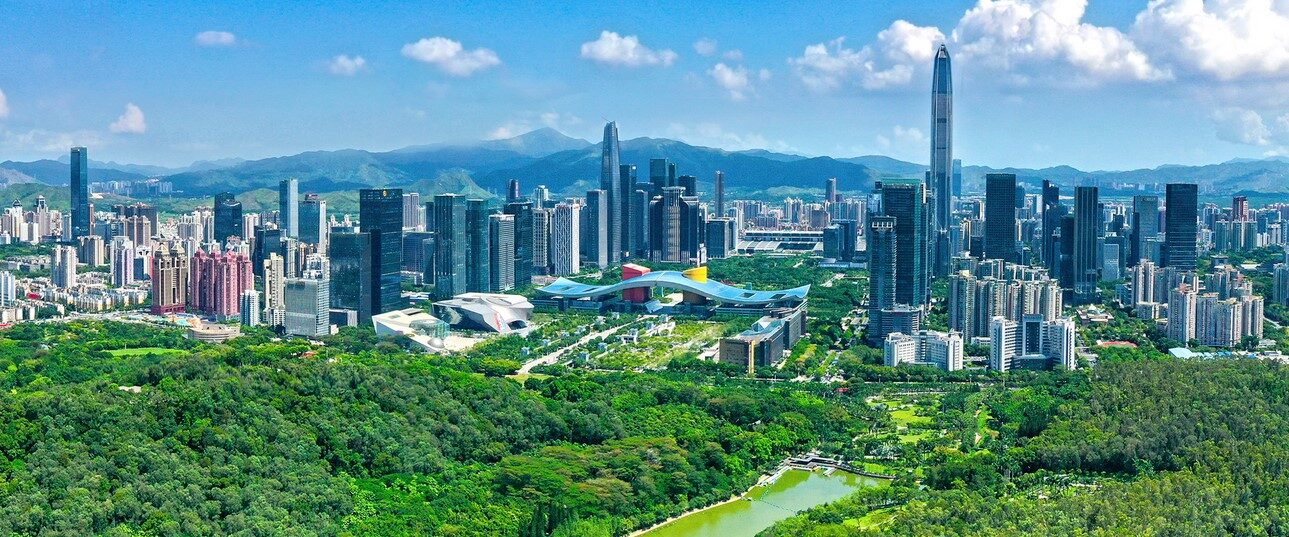Shenzhen is a city where I have lived for decades. As a local resident, I have compiled a list of experiences that you should explore during your visit. Once you have familiarized yourself with the routes and destinations, all you need is a translation device to fully enjoy everything Shenzhen has to offer.
Some places worth visiting.
I am not sure how everyone views travel, but from my perspective, its true essence lies in exploring new places and immersing oneself in local customs and culture. Moreover, since travel time is limited, we should prioritize visiting the most worthwhile destinations.
Dapeng Peninsula
Located in the southeastern part of Dapeng New District, Shenzhen, it is relatively far from the city center.

Dapeng Peninsula is known as the “Lungs of Shenzhen”, boasting numerous national and municipal ecological protection areas. The peninsula has also preserved many indigenous villages, such as Dapeng Village and Nanao Village, which embody rich Hakka and maritime cultural heritage.

Additionally, Dapeng Peninsula served as a filming location for the Chinese movie Mermaid. For domestic tourists, it is considered one of the must-visit destinations when traveling to Shenzhen.

Address: No. 1, Nanao Geological Park Road, Dapeng New District, Shenzhen.
You can take Bus 423 from Shenzhen city center to the National Geological Park, then walk approximately 130 meters using navigation to reach your destination. Alternatively, you can take Metro Line 2 and get off at Huangbeiling Station.

When visiting Dapeng Peninsula, it’s advisable to bring your own food and water in advance. The nearby shops tend to have high prices, and the long distance makes it impractical to spend time searching for supplies. Being well-prepared ensures you can fully enjoy the scenic beauty and cultural heritage without unnecessary hassle.
Dapeng Village

This Ming Dynasty military fortress, built in 1394, played a significant role in defending against coastal invasions. Moreover, the site is open to the public free of charge.
window of the world
The Window of the World, located in Nanshan District of Shenzhen, Guangdong Province, China, is a large-scale comprehensive theme park that features miniature replicas of famous landmarks and cultural sites from around the globe.

The park showcases iconic attractions from over 130 countries and regions, including the Eiffel Tower, the Pyramids of Egypt, the Taj Mahal, and the Statue of Liberty, allowing visitors to experience a journey around the world in a single day.

You can reach Window of the World in Shenzhen by taking Metro Line 1 or Line 2 and alighting at the “Window of the World” station. The station features multiple exits, with Exit H providing direct access to the parking area, while Exits A and B are near attractions such as Happy Valley and Yitian Holiday Plaza, facilitating easy access to the surrounding areas. Travel time from various commercial centers in the city typically ranges from 30 to 50 minutes.
Regarding bus services, there are several bus stops around Window of the World, including the “Window of the World Main Station” and “Window of the World No. 2 Station.” Numerous bus routes, such as 121, 222, 395, 59, 90, 323, 324, 338, 369, and M165, serve these stops, offering convenient options for visitors. Bus schedules and routes can be checked using public transportation apps.
If you are unfamiliar with how to use the bus system, you may refer to the following article for guidance.
Shenzhen Bus Guide: Essential Tips & 2025 Update
Window of the World is open daily from 9:00 AM to 9:00 PM. Operating hours may vary, so it is recommended to verify the latest information before planning your visit.
Ticket Prices
| Ticket Type | Price (CNY) | Eligibility / Notes |
|---|---|---|
| Adult (Full-day) | ¥220 | Height ≥ 1.5 m or adult |
| Child (Full-day) | ¥110 | Height between 1.2 m and 1.5 m |
| Senior (Full-day) | ¥110 | Age 65–69 |
| Student (Full-day) | ¥168 | Valid student ID |
| Birthday Adult Ticket | ¥110 | Valid on birthday with ID |
| Evening/Night Ticket | ¥100–120 | Entry after 18:00 or 19:00 (varies) |
| Free Admission | ¥0 | Children under 1.2 m and seniors 70+ |
| Non-mainland Adult (Full-day) | ¥210 | For visitors from HK, TW, foreign passports |
yangmeikeng
Yangmeikeng, located in Shenzhen’s Yantian District, is a popular tourist destination known for its coastal natural scenery and relaxed fishing village culture. The area features well-preserved fishing village architecture, clear seawater, and abundant seafood resources, making it an ideal getaway near the city for those seeking to connect with nature and unwind.

Renowned for its coastline and beaches, Yangmeikeng offers visitors the opportunity to hike along the shore, enjoying spectacular ocean views and unique rock formations. Additionally, the area hosts numerous seafood restaurants that serve freshly caught seafood, which are highly favored by tourists.

In terms of transportation, Yangmeikeng is conveniently accessible from Shenzhen’s urban area by public transit or private car. It is also one of the popular hiking routes around Shenzhen, attracting outdoor enthusiasts and photographers alike.
Dafen Oil Painting Village
Dafen Oil Painting Village, located in Buji Subdistrict, Longgang District, Shenzhen, is the largest oil painting production and trading hub in China.

The village hosts numerous galleries and studios where visitors can admire and purchase a wide variety of oil paintings, as well as experience live painting sessions.

In terms of transportation, visitors can take Shenzhen Metro Line 3 to Dafen Station and exit at Exit A1. From there, it is about a 5 to 10-minute walk to the village.
Dafen Oil Painting Village is generally open from Tuesday to Sunday, 9:30 AM to 5:30 PM, and closed on Mondays except for statutory holidays.
It is an important cultural destination for art enthusiasts and tourists interested in contemporary Chinese oil painting.
Dapeng Fortress
Dapeng Ancient City, also known as Dapeng Fortress, is located in Dapeng New District of Shenzhen, Guangdong Province. Constructed in the 27th year of the Hongwu reign of the Ming Dynasty (1394), it is an ancient coastal defense fortress and remains one of the oldest and best-preserved architectural complexes in Shenzhen.

Initially built to resist Japanese pirates and safeguard maritime borders, the city later became a vital garrison of the Qing Dynasty navy. During the Opium War and the War of Resistance Against Japan, it gave rise to notable historical figures such as General Lai Enjue and anti-Japanese hero Liu Hezai.

Dapeng Ancient City is open to the public free of charge, with no entrance ticket required to explore the ancient city walls, alleys, and traditional architecture. Visitors can freely walk through the historical streets and experience the unique charm of this well-preserved Ming and Qing Dynasty fortress. Additionally, the Dapeng Ancient City Museum, located within the complex, also offers free admission and is open from Tuesday to Sunday, 9:00 AM to 5:00 PM (closed on Mondays).
It features exhibitions on local history, maritime defense, and revolutionary heritage. However, if you plan to drive to the Dapeng Peninsula—especially during holidays or weekends—you may need to make an advance vehicle reservation due to traffic control policies.
What are the must-try foods?
Due to its relatively developed economy, Shenzhen attracts people from various provinces across China who come to the city for work. Naturally, this diversity is also reflected in its cuisine. Shenzhen boasts a wide variety of culinary delights representing flavors from all regions of China, making it a true melting pot of Chinese food culture.

It’s not just local Shenzhen cuisine—next, I’ll introduce other delicious foods gathered here that are absolutely worth trying.
Anhui Banmian noodles
Anhui Banmian originated in Taihe County, Fuyang City, Anhui Province. It is a traditional noodle dish with strong regional characteristics. The word “ban” (板) in its name comes from the preparation process, where the dough is repeatedly slapped against the work surface and rolled into flat sheets, giving the noodles their distinctive shape.
In Fuyang, the traditional version of Banmian is typically made with lamb, featuring a rich broth and chewy, springy noodles. During the 1980s and 1990s, as many people from Fuyang migrated north for work, the dish gradually spread to other regions, especially Hebei Province. In cities like Shijiazhuang, where beef is more commonly preferred, the dish evolved to use beef as the main ingredient. This variation became widely known as “Anhui Beef Banmian.”
Today, Anhui Banmian is not only a flavorful dish but also a reflection of regional culture and culinary tradition, showing both historical continuity and adaptation.
This noodle dish is named after a province in China. The term “ban” (板) in its name refers to the local practice of flattening the dough into a sheet during preparation.

The highlight of this dish, aside from the noodles themselves, lies in its rich broth. The soup base is simmered with a blend of aromatic spices and beef, giving it a deep, flavorful taste.

Since the broth is simmered for a long time, the chili peppers blend into the soup and lose much of their spiciness. So go ahead—take a big bite without hesitation!
In Shenzhen, you can find many small restaurants and food stalls serving this flavorful dish, especially in areas with a strong migrant community.
Some popular places to try Ban Mian include:
| Shop Name | Area | Features/Notes |
|---|---|---|
| Lao San Ban Mian | Futian / Longgang | Authentic Anhui-style beef noodles, spicy and rich |
| Authentic Anhui Beef Noodles (Individual Shop) | Longhua Minzhi / Buji | Strong local flavor, traditional taste |
| Di Guo Lao Ban Mian | Near Nanshan Tech Park | Heavy oil and spice, suitable for Anhui locals |
| Small Town Ban Mian | Bao’an Shajing area | Simple setting, authentic flavor |
Songgang Cured Duck
Songgang Cured Duck is a traditional delicacy from Songgang Town in Bao’an District, Shenzhen. Known for its glossy reddish-brown color, rich aroma, and deep, savory flavor, this cured duck is made using carefully selected ducks that are slowly braised in a secret blend of soy sauce and spices, then air-dried to perfection. The result is a deliciously aromatic dish with firm, flavorful meat.


